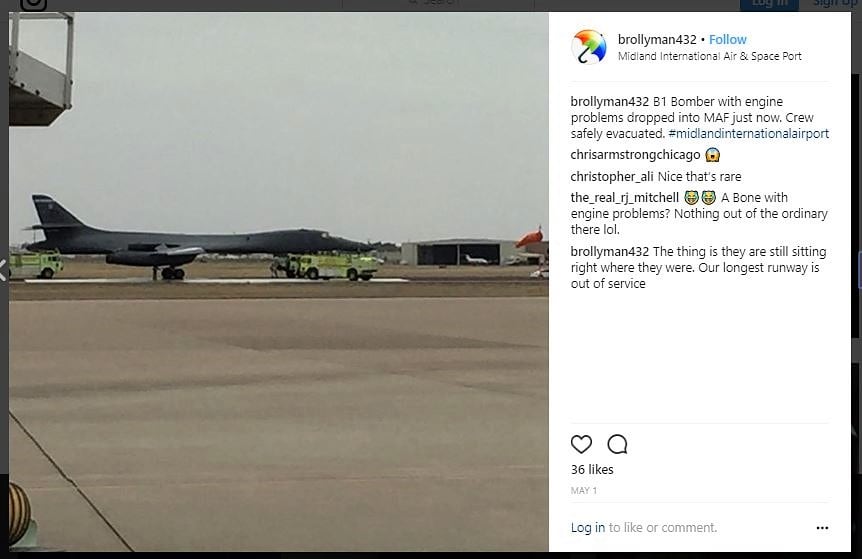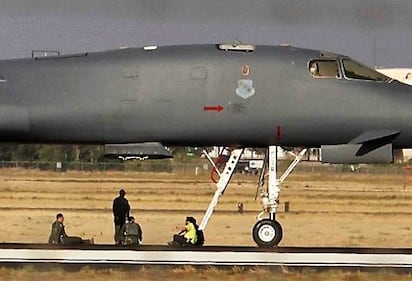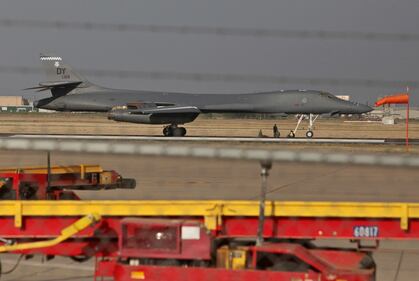A B-1 Lancer that made an emergency landing in Texas earlier this month blew at least one of its four cockpit escape hatches, but the ejection seat did not deploy, photos of the incident show.
The Dyess Air Force Base bomber experienced an “in-flight emergency” when it requested to land at Midland International Air and Space Port. Fire crews responding to the aircraft used foam on the plane, suggesting the crew had reported an engine fire.
All four crew members landed safely.
Two photographs, one distributed by the Associated Press and one taken by the Midland Reporter-Telegram show that at least one of the emergency hatches above the crew in the cockpit blew open, suggesting the call to eject had been made.
Those images raised several questions, including whether the blown hatch or hatches had been found and recovered, and whether the ejection system had failed because the ejection seats did not deploy.
A B-1 has a crew of four: A pilot, co-pilot, and two weapons officers seated behind them. Each crew member is strapped into an ACES II ejection seat, and there is an escape hatch above each B-1 crew member.
In an emergency, once the ejection handle is pulled, an automatic sequence takes over. The hatch is blown and the seats are launched from the aircraft via a STAPAC rocket motor. The entire sequence takes seconds to complete.
Image 0 of 2
If the B-1 seats failed to eject, it would be similar to a seat failure in a 1987 B-1 crash in Colorado where an instructor pilot was killed because his seat failed.
In that flight, the B-1, which is designed for a crew of four, had two additional crew members in jump seats. Both jump seat passengers and the instructor pilot whose ejection seat failed were killed in the crash.
The Air Force would not comment on whether the blown hatch, shown up close in a photograph that appeared in the Midland Reporter-Telegram, had been recovered, and whether the ejection seat failed to deploy.

The incident is still under investigation, Dyess Air Force Base officials said.
Tara Copp is a Pentagon correspondent for the Associated Press. She was previously Pentagon bureau chief for Sightline Media Group.


